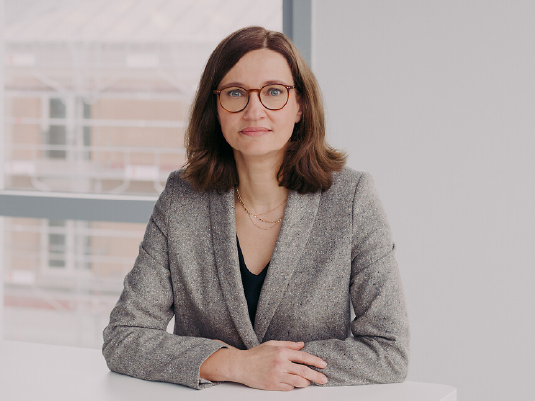Transport accounts for more than a third of all carbon emissions in France, spurring local authorities to place the sector top of the list in their decarbonisation policies [1]. One illustration of this trend is the changing profile of urban bus fleets. In 2023, the proportion of diesel buses on the road dropped below the 50% mark for the first time, while those running on electric jumped from 3.9% to 7.8% in barely two years. And yet this transition brings with it an economic paradox. “An electric vehicle costs about twice as much as a diesel bus,” which significantly increases its total cost of ownership despite cheaper energy and maintenance costs, explains Annelise Avril. This complex budgetary equation comes at a time when the June 2024 European regulation will place constraints on local authorities and manufacturers, mandating that 100% of new city buses must be zero emission by 2035 [2].
Public transport: asset management, the cornerstone of decarbonisation

A triple whammy for asset management
Local authorities are thus now having to navigate between three hard-to-square imperatives. First, develop the quantity of public transport services to irrigate zones that currently benefit from few, if any, services – the only way of coaxing motorists into leaving their car at home. Second, replace an ageing fleet with less carbon intensive but more expensive technologies. Finally, desaturate the transport networks that were designed 15 or 30 years ago and today are approaching breaking point.
This convergence of constraints is prompting transport organisations to turn to markedly creative solutions. In Bordeaux, Keolis is testing the concept of extending tram vehicle lifespans by ten years (from 30 years to 40). The operation is based on in-depth analyses of the condition and ageing of the city’s light rail vehicles – exposure to vibrations depending on conditions of track use, amount of corrosion observed –conducted by third party bodies. “We used the findings of these studies to draw up the safety case we submitted to the supervisory body STRMTG,” says Annelise Avril. “Based on this robust and exhaustive approach, they agreed to this extension.” This operation of unprecedented proportions will apply to 62 of the 130 trams in service on the Bordeaux network. It also makes clear economic sense: while a new tram represents an investment of €6 million, an overhaul only costs €600,000, generating more than €80 million in savings across the full programme.
Some local authorities have opted for collaborative procurement policies. Besançon, Brest and Toulouse, for example, have pooled their order for new trams, thus benefiting from preferential process thanks to harmonised technical standards: a highly complex feat given the particularities specific to each network.
The intelligence of desaturation
Desaturation strategies reveal increasingly sophisticated asset management approaches. In Dijon, five critical locations in the network have been adapted to become partial terminus stations, making it possible to increase service frequency on the busiest track sections without having to deploy additional rolling stock.
In Bordeaux, the challenge revolved around getting passengers across the Garonne more smoothly. “The engineering works we conducted during the summer have led to a 30% increase in crossings on the Pont de Pierre, the bridge most used by the tram, thanks to new points and the creation of new direct routes,” explains Annelise Avril.
Other solutions do not require any material investment. In Rennes, a collaboration between the city council’s scheduling department and its university resulted in some of its students starting their day 15 minutes later than usual, thereby alleviating the major ridership peaks and leading to a 14% drop in the load borne by metro line A that calls at University of Rennes 2. The method was replicated this year with four high schools [3] , illustrating how intelligent coordination can help desaturate the network without calling for significant investment.
The emergence of a technological ecosystem
The mass electrification of buses is fundamentally transforming the industrial ecosystem of public transport. “Today we work with charging infrastructure specialists and battery manufacturers,” adds Annelise Avril, “creating a much more diverse range of stakeholders than with diesel buses.” This new paradigm has led to the emergence of new job disciplines and redefined existing skills. Maintenance teams today need to be proficient in electrotechnical systems, manage complex charging systems and anticipate battery ageing. Traffic roster planners also build the limitations of range and charge time into their operating schedule calculations.
Working in partnership with Forsee Power and Iveco France, Keolis thus monitors the accelerated ageing of batteries with a view to identifying the best conditions to maintain operating range as high as possible. “These analyses aim to establish operational rules and guidance that could potentially extend lifespans by several years”, says Annelise Avril. This prospect could constitute a gamechanger for the electric transport business model.
In response to the significantly higher cost of electric vehicles, one alternative is gaining traction: retrofitting, or the conversion of diesel vehicles to electric or hydrogen powertrains. “Each situation calls for a specific analysis comparing the respective TCOs of a retrofitted and a new vehicle,” emphasises Annelise Avril. In Clermont-Ferrand, this strategy is being tested in practice: seven coaches retrofitted by GCK Mobility are on the road, their original diesel engines having been replaced by electric systems powered by hydrogen fuel cells [4].
On the road to a systemic approach
The rapidly evolving technological landscape requires that local authorities adopt a prudent approach. With biogas due to be phased out by European regulations, many councils that had heavily invested in this vertical will have to pivot their strategies towards electricity. “It would be an error to put all your energy eggs in one basket, even if electricity appears to be the unavoidable choice,” warns Keolis’ CEO France for urban networks.
But this transition is made all the more complex due to the instability of financing mechanisms. The schemes available today, such as the annually renewable ADEME programme or energy saving certificates with no time guarantee, only offer two or three years of visibility. These outlooks are incompatible with fleet planning timelines that stretch 15 years into the future. “Local authorities need to be provided with guarantees that allow them to plan their fleet movements with certainty and security,” says Annelise Avril.
This transformation in asset management practices now requires public sector support commensurate with the challenges faced. Because while local authorities continue to display remarkable creativity, they cannot alone shoulder the full weight of the energy transition in public transport.
[1] Notre-environnement.gouv.fr
[2] Official Journal of the European Union
[4] Keolis.com
Ces articles peuvent vous intéresser



